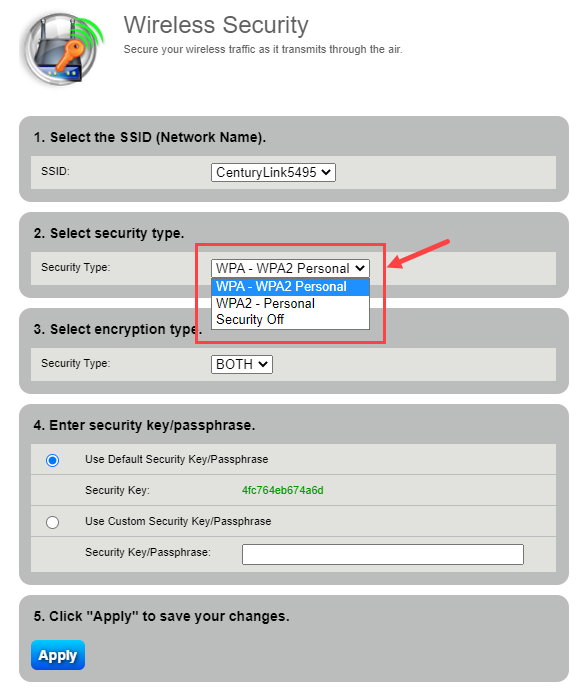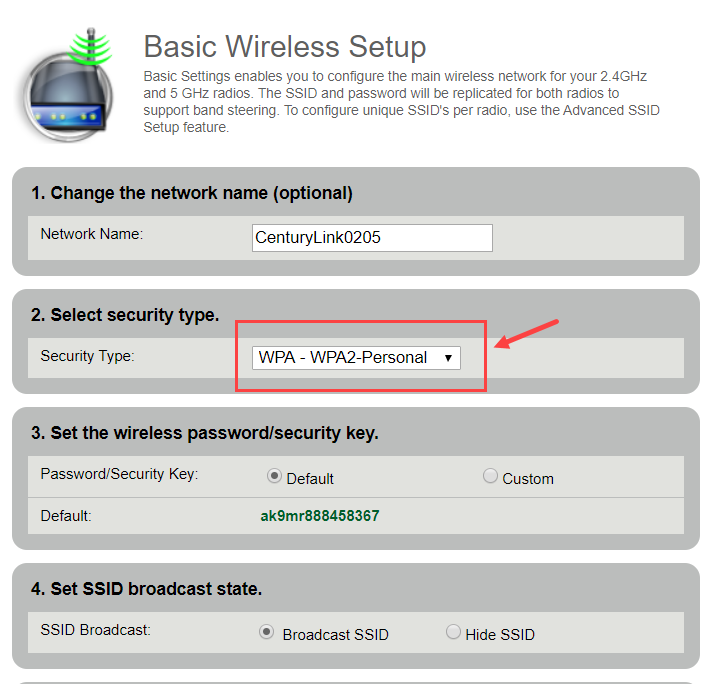WiFi network security types
WiFi networks provide the convenience of staying connected without a wired Ethernet connection. However, WiFi can create security risks, including potential cyberattacks. This makes wireless encryption is important. These protocols are in place to secure your network and protect your data from hackers.
When you look at the security settings for your wireless network, the encryption choices available will typically include WPA2 and WPA3. These differ in speed, performance, and the level of protection they offer. For most users today, WPAe is the best option, as it supports the most secure method of encryption.
How to select your encryption type on your network
Briefly, here’s how to set up WPA3 or WPA2 security on a Brightspeed modem:
- While connected to your home WiFi network, open a web browser and type http://192.168.0.1 into the URL field. This will bring you to your modem settings portal.
- Log in to your secure portal with your admin username and password. These are printed on the sticker that is affixed to the bottom or side of your modem.
- Select the Wireless Setup icon from the menu.
- Depending on your model of modem, you will find the encryption settings in either “Basic Wireless Setup” or the “Wireless Security” section. You can see screenshots of the two versions below.
Wireless Security menu

Basic Wireless Setup menu

- Select “WPA3 – Personal” or “WPA2 – Personal” from the dropdown menu for Security Type.
- While you’re there, consider changing your WiFi security key to a strong, unique password. This will further protect your WiFi network from potential intruders.
- Select “Apply” to save your changes.
WPA2 vs. WPA3
Let's compare the two most common, and secure encryption types that you may see in your options.
WiFi Protected Access 3 (WPA3) – WPA3 was released in 2018, and is now the standard encryption. It provides enhanced protection for your passwords and data, and also makes it easier to connect smart home devices.
WiFi Protected Access 2 (WPA2) – Not long after WPA came out, WPA2 became available. WPA2 solved many of the issues of WPA, and provides stronger security with easier setup. Until 2018, WPA2 was considered the top standard in encryption types. WPA3 has since taken its place.
Older encryption types
Prior to 2004, the encryption types available were WEP and WPA.
Wired Equivalent Privacy (WEP) – This was the first-ever security protocol, used from 1999 to 2004, which makes it the oldest type. Though WEP was designed to protect networks, it had poor security and was difficult to configure. A WiFi network using WEP today is considered the least secure and should be upgraded or replaced in order to protect your internet activity.
WiFi Protected Access (WPA) – As an improvement on WEP, WPA was created in 2003, and offers more secure encryption for your WiFi network, but still isn’t considered the best security option. Why? Some elements of WEP were kept as part of WPA to allow for compatibility with older devices. This means WPA has similar vulnerabilities to WEP and can be hacked more easily than its successor, WPA2.
Learn more from our home network security hub, or see how to change wireless security options through your modem settings portal.
Was this page helpful?
Brightspeed services support

.png)





.png)



